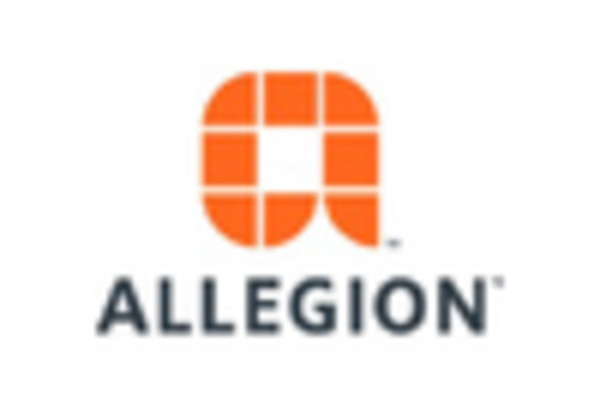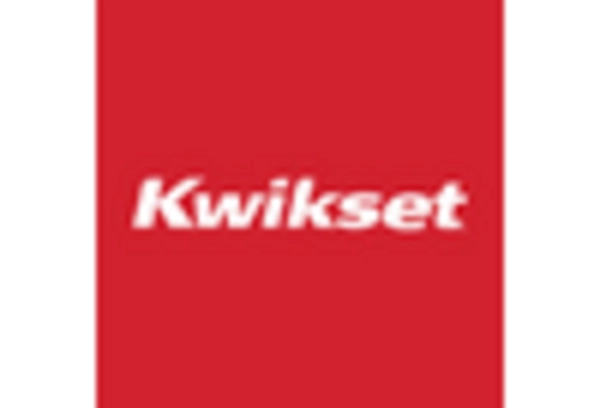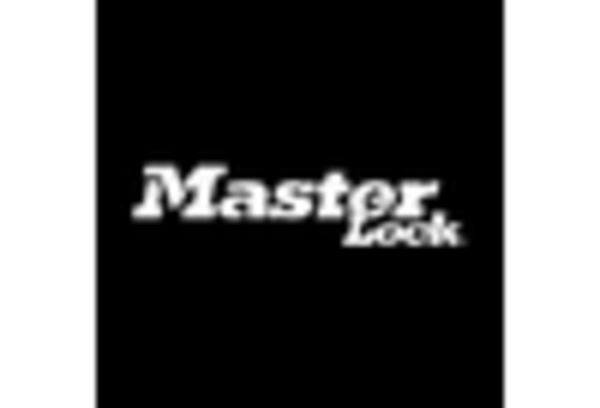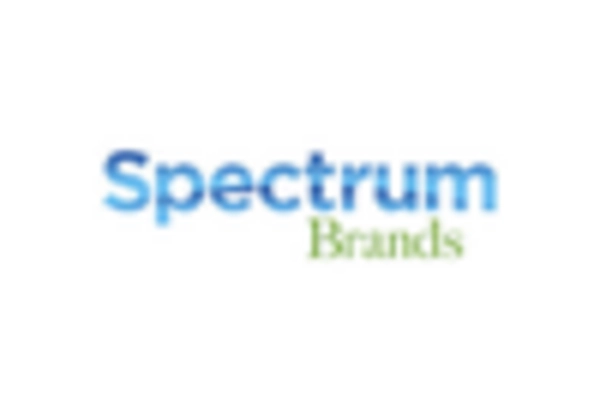Rising Crime Rates
The mechanical locks market in North America is experiencing growth due to rising crime rates, which have heightened the demand for robust security solutions. As property crimes, including burglary and theft, continue to pose significant threats, consumers and businesses are increasingly investing in mechanical locks to safeguard their assets. According to recent data, property crime rates in urban areas have surged by approximately 10% over the past year, prompting a shift towards more secure locking mechanisms. This trend is particularly evident in residential and commercial sectors, where the need for reliable security systems is paramount. The mechanical locks market is thus positioned to benefit from this heightened awareness of security needs, as individuals seek to enhance their protection against potential intrusions.
Regulatory Compliance
The mechanical locks market is also influenced by regulatory compliance requirements that mandate enhanced security measures across various sectors. Government regulations, particularly in industries such as banking, healthcare, and education, necessitate the implementation of stringent security protocols, including the use of high-quality mechanical locks. These regulations are designed to protect sensitive information and assets, thereby driving demand for reliable locking solutions. As organizations strive to meet compliance standards, the mechanical locks market is expected to witness increased sales, particularly in sectors where security is paramount. This trend underscores the importance of mechanical locks in maintaining safety and security in compliance-driven environments.
Technological Advancements
Technological advancements in the mechanical locks market are driving innovation and enhancing product offerings. Manufacturers are increasingly integrating advanced features into traditional mechanical locks, such as keyless entry systems and smart locking mechanisms that maintain the mechanical integrity while providing added convenience. This evolution is attracting a broader consumer base, including tech-savvy individuals and businesses looking for modern security solutions. The market is projected to grow at a CAGR of around 5% over the next five years, fueled by these innovations. As consumers become more aware of the benefits of combining traditional security with modern technology, the mechanical locks market is likely to see a significant uptick in demand.
Increased Construction Activities
Increased construction activities in North America are contributing to the growth of the mechanical locks market. As new residential and commercial buildings are erected, the demand for reliable locking systems is on the rise. The construction sector is projected to grow by approximately 4% annually, leading to a corresponding increase in the need for mechanical locks. Builders and contractors are increasingly incorporating advanced locking solutions into their projects to meet safety standards and consumer expectations. This trend not only supports the mechanical locks market but also encourages innovation as manufacturers strive to provide products that meet the evolving needs of the construction industry.
Growing Awareness of Security Solutions
There is a growing awareness of security solutions among consumers and businesses in North America, which is positively impacting the mechanical locks market. As individuals become more informed about the risks associated with inadequate security measures, they are more likely to invest in high-quality mechanical locks. This trend is particularly pronounced in residential areas, where homeowners are increasingly prioritizing security features in their properties. Market Research Future indicates that approximately 60% of homeowners consider security a top priority when making purchasing decisions related to home improvements. This heightened awareness is likely to drive demand for mechanical locks, as consumers seek to enhance their home security.


















Leave a Comment